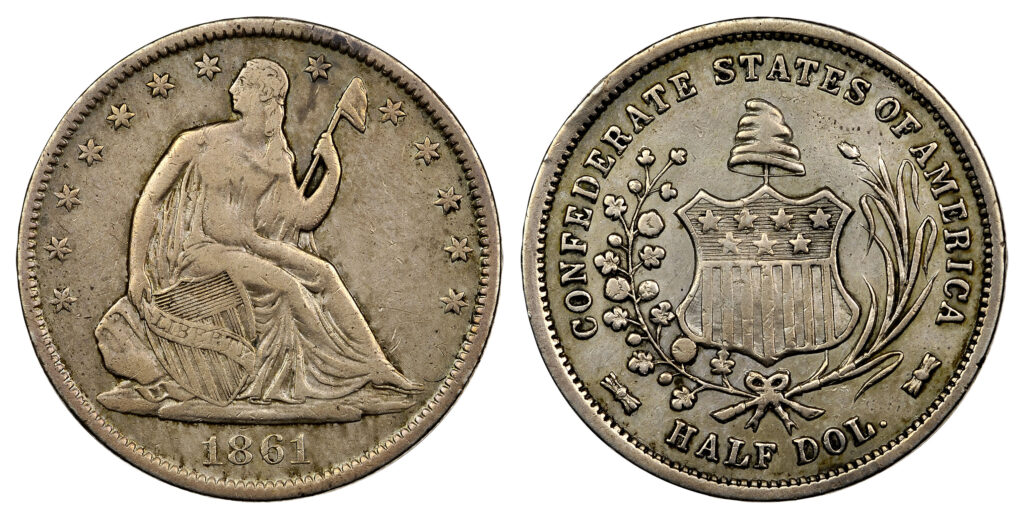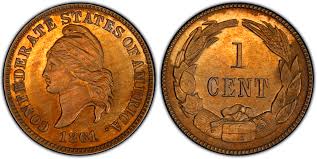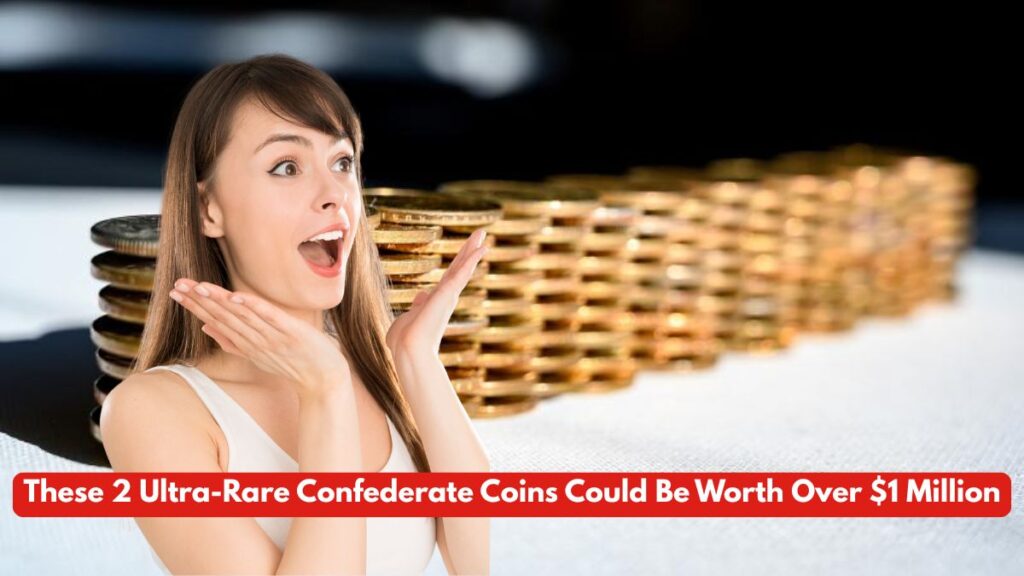At the height of the American Civil War, the Confederate States of America made a short-lived but ambitious attempt to assert their sovereignty—including through coinage.
This effort resulted in the creation of two ultra-rare coins: the 1861 Confederate Half Dollar and the 1861 Confederate Cent. Both coins are now considered some of the most coveted items in American numismatic history.
The 1861 Confederate Half Dollar: Born from a Seized Mint
After Louisiana seceded from the Union in January 1861, the Confederate government seized control of the New Orleans Mint. At first, the mint continued striking U.S. coins using existing dies. But Confederate officials soon sought to mint their own currency to reflect their break from the Union.
To achieve this, they retained the obverse (front) die featuring Seated Liberty—a design originally crafted by Christian Gobrecht—and commissioned a new reverse die. This reverse bore a shield with seven stars, representing the seven original Confederate states, along with the inscription “Confederate States of America.”

Only four genuine Confederate half dollars were ever struck, making them incredibly rare. These coins were made from the same silver planchets used in U.S. coinage and have become legendary in the numismatic community. One of the four is held in the American Numismatic Association’s (ANA) Money Museum in Colorado Springs, Colorado.
The 1861 Confederate Cent: A Secret Project
Unlike the half dollar, the Confederate cent was struck not in the South but in Philadelphia, under the radar.
According to historians, the Confederate government secretly commissioned Robert Lovett Jr., a Philadelphia-based engraver, to design a one-cent coin. Lovett created a design featuring Minerva, the Roman goddess of wisdom, on the obverse, and a simple wreath surrounding “1 CENT” on the reverse.

Twelve specimens were reportedly struck in nickel. However, fearing federal prosecution for aiding the enemy, Lovett is believed to have stopped minting and hid both the coins and the dies.
The Confederate cent remained unknown until decades later when one was found among Lovett’s belongings. Since then, only 12 genuine examples have surfaced, making the coin one of the rarest American cents ever produced.
Value and Legacy
These coins are not just rare—they’re historical artifacts that provide a tangible connection to the Confederacy’s failed bid for economic independence.
Market Value:
- 1861 Confederate Half Dollar: Has fetched close to $1 million in recent auctions.
- 1861 Confederate Cent: Has sold for over $200,000, depending on condition and provenance.
Even restrikes and replicas—some produced in the decades after the Civil War using the original dies—can command tens of thousands of dollars at auction.
Cultural Significance
Though minted in secrecy and small quantities, both coins symbolize the Confederacy’s ambition to create a separate identity from the Union. They serve as a fascinating glimpse into Civil War history and the logistical and political challenges faced by the South.
Their rarity also continues to drive intense interest among coin collectors, historians, and institutions alike.
Conclusion
The 1861 Confederate Half Dollar and Cent are more than just rare pieces of currency—they are fragments of a turbulent chapter in American history. Minted during a brief and chaotic period, these coins symbolize the Confederate States’ fleeting attempt to establish a sovereign identity through monetary means.
Despite their limited production and covert origins, both coins have survived to tell stories of political ambition, economic struggle, and historical legacy.
Today, these coins are treasured not only for their monetary value but for the powerful narrative they carry. As physical remnants of the Civil War era, they serve as reminders of a divided nation and the enduring importance of preserving our numismatic heritage.
Whether held in private collections or displayed in museums, the 1861 Confederate coins continue to captivate collectors, historians, and the public alike—offering a unique window into the past, one coin at a time.
This article has been carefully fact-checked by our editorial team to ensure accuracy and eliminate any misleading information. We are committed to maintaining the highest standards of integrity in our content.



